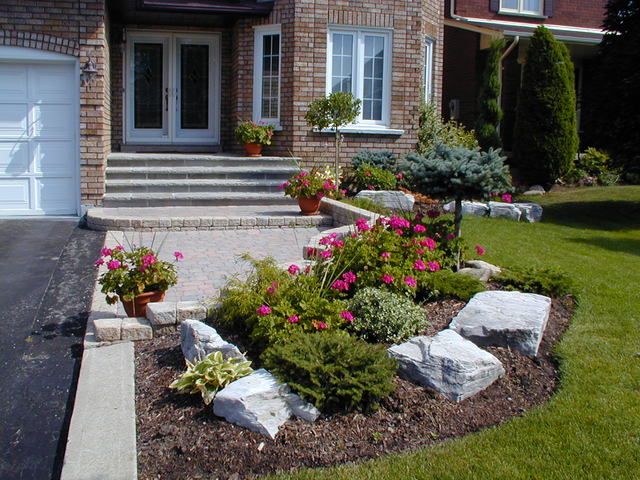In an age where environmental consciousness is more important than ever, adopting sustainable landscaping practices is a powerful way to make a positive impact on the planet. Sustainable landscaping not only conserves resources but also enhances the beauty and functionality of your outdoor spaces. Whether you’re starting a new project or looking to improve an existing landscape, this ultimate guide will walk you through the essentials of sustainable landscaping, offering practical tips and insights to help you create an eco-friendly garden.
What is Sustainable Landscaping?
Sustainable landscaping involves designing and maintaining outdoor spaces in ways that minimize environmental impact, conserve resources, and promote ecological balance. It focuses on using native plants, reducing water and chemical use, and creating habitats for local wildlife. By incorporating sustainable practices, you can create a garden that is both beautiful and beneficial to the environment.
1. Planning and Design
Choose Native Plants
One of the cornerstones of sustainable landscaping is selecting native plants. These plants are adapted to the local climate and soil conditions, which means they generally require less water, fertilizers, and pesticides than non-native species. Native plants also support local wildlife, providing food and shelter for birds, insects, and other creatures.
Implement Xeriscaping
Xeriscaping is a landscaping method that reduces the need for irrigation by using drought-tolerant plants and efficient watering practices. This technique is especially valuable in arid or semi-arid regions where water conservation is crucial. By designing your garden with xeriscaping principles, you can create a lush and attractive space while conserving water.
Plan for Energy Efficiency
Consider how your landscaping design can contribute to energy efficiency. Strategic placement of trees and shrubs can provide shade and reduce the need for air conditioning in the summer. In colder months, deciduous trees that lose their leaves can allow sunlight to warm your home. Proper planning can lead to significant energy savings and a more comfortable living environment.
2. Water Management
Implement Rain Gardens
Rain gardens are designed to capture and manage rainwater runoff from impervious surfaces like driveways and roofs. By directing water to these garden areas, you can help reduce erosion, filter pollutants, and recharge groundwater. Rain gardens use native plants that thrive in wet conditions, making them both functional and attractive. For more insights and further information about sustainable landscaping practices, check out Pinoy ePlans to learn more.
Use Drip Irrigation
Drip irrigation is an efficient watering system that delivers water directly to the root zone of plants. This method minimizes water waste and reduces evaporation compared to traditional sprinkler systems. By using drip irrigation, you can ensure that your plants receive the right amount of water while conserving resources.
Mulch for Moisture Retention
Mulching is a simple yet effective way to conserve moisture in the soil. Organic mulches, such as wood chips, straw, or leaves, help retain soil moisture, suppress weeds, and improve soil structure as they decompose. Applying a layer of mulch around plants can reduce the need for frequent watering and contribute to a healthier garden.
3. Soil Health and Maintenance
Practice Composting
Composting is an excellent way to recycle organic waste and enrich your garden soil. By turning kitchen scraps, yard waste, and other organic materials into compost, you create a nutrient-rich amendment that improves soil fertility and structure. Composting also reduces the need for chemical fertilizers, which can be harmful to the environment.
Avoid Chemical Pesticides and Fertilizers
Chemical pesticides and fertilizers can have negative impacts on the environment, including harming beneficial insects and polluting water sources. Instead, focus on natural pest control methods, such as encouraging predatory insects and using organic pest repellents. For fertilization, consider using organic or slow-release fertilizers that provide nutrients without the risk of runoff.
Practice Erosion Control
Erosion control is essential for maintaining soil health and preventing sediment runoff. Implementing ground covers, installing retaining walls, and planting vegetation on slopes can help stabilize the soil and reduce erosion. Erosion control practices also protect water quality by preventing sediment from entering waterways.

4. Wildlife Habitat
Create Pollinator-Friendly Spaces
Pollinators, such as bees, butterflies, and hummingbirds, play a crucial role in maintaining healthy ecosystems. By incorporating pollinator-friendly plants into your landscape, you can provide essential food sources and habitats for these important creatures. Choose a variety of flowering plants with different bloom times to ensure a continuous supply of nectar and pollen.
Provide Shelter and Nesting Sites
In addition to food sources, wildlife needs shelter and nesting sites to thrive. Consider adding birdhouses, bat boxes, or insect hotels to your garden to offer safe havens for various species. Native plants also provide natural shelter and nesting sites, creating a welcoming environment for wildlife.
Avoid Invasive Species
Invasive species can outcompete native plants and disrupt local ecosystems. Be mindful of the plants you choose for your garden and avoid those known to be invasive in your region. Opt for native species that support local wildlife and contribute to a balanced ecosystem.
5. Sustainable Practices for Garden Management
Use Eco-Friendly Garden Tools
Choosing eco-friendly garden tools can reduce your environmental impact. Look for tools made from sustainable materials, such as bamboo or recycled plastics, and consider using manual tools instead of power tools to save energy. Maintaining your tools properly and repairing them when needed can also extend their lifespan and reduce waste.
Conserve Energy
Energy conservation extends beyond your home and into your garden. Use energy-efficient lighting for outdoor spaces, such as LED lights, and consider installing solar-powered lights to reduce electricity consumption. Additionally, minimize lawn mowing by incorporating low-maintenance ground covers and reducing lawn areas where possible.
Reduce Lawn Area
Traditional lawns often require extensive water, fertilizer, and maintenance. Reducing the size of your lawn and replacing it with alternative ground covers, garden beds, or natural areas can significantly reduce your resource use. Consider creating functional outdoor spaces, such as patios or vegetable gardens, to replace high-maintenance lawn areas.
Conclusion
Sustainable landscaping is more than just a trend; it’s a commitment to creating outdoor spaces that benefit both people and the environment. By incorporating native plants, managing water efficiently, maintaining soil health, supporting wildlife, and adopting eco-friendly practices, you can design a garden that is beautiful, functional, and sustainable. Embrace these practices to contribute to a healthier planet and enjoy a vibrant, eco-friendly outdoor space for years to come.





